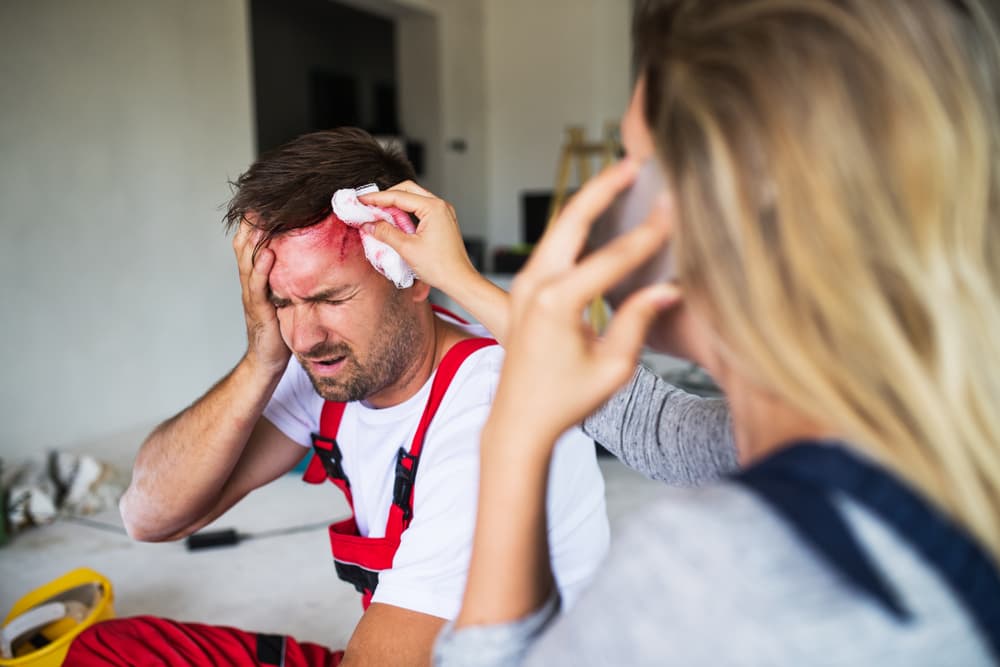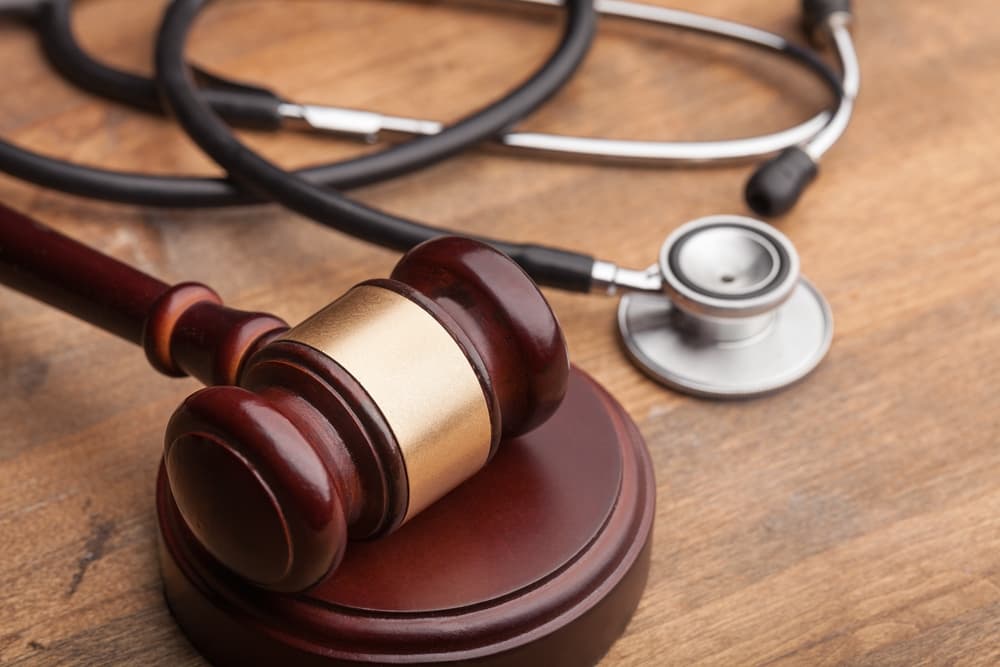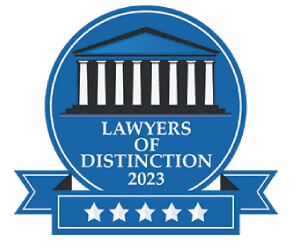
Individuals on construction sites have a very dangerous job. In many situations, individuals must work around heavy and dangerous equipment daily, exposing themselves to serious accidents and injuries.
You can take legal action if you sustained injuries in a construction accident. A construction accident attorney in Atlanta can review your options and can file a workers' compensation claim with your employer's insurance company. In addition, if your construction accident resulted from another party's negligence, your lawyer can file a third-party claim or lawsuit on your behalf.
Throughout the entire process, your lawyer will aggressively fight for your legal interests and work to maximize the monetary benefits and compensation you deserve for your accident-related losses.
Common Accidents That May Occur on Construction Sites
Construction sites are inherently hazardous environments, and various accidents frequently occur due to the dynamic nature of the work. The following are typical types of construction site accidents:
- Falls — One common type of accident involves falls from heights. Construction workers often perform tasks on elevated surfaces such as scaffolds, ladders, or rooftops. Accidents frequently occur when those overseeing the construction site have neglected or improperly implemented safety measures, such as fall protection systems or guardrails.
- Struck-by Accidents — Struck-by accidents represent another prevalent occurrence on construction sites. This type of accident occurs when a falling object hits a worker, moving equipment, or vehicles. These accidents can result from inadequate storage practices, failure to secure tools and materials, or the careless operation of heavy machinery.
- Trench Collapses — Trench collapses pose another significant risk, particularly on construction sites involving excavation work. Accidents happen when trenches are improperly shored or supported, leading to cave-ins that can bury workers.
- Caught-in/Caught-between Accidents — Caught-in or caught-between incidents are also common on construction sites. These accidents happen when workers become trapped or crushed between equipment, machinery, or structures. Poorly maintained machinery, inadequate training, or failure to follow safety procedures can contribute to these accidents.
- Electrocutions— Electrocutions are also a serious hazard on construction sites, given the extensive use of electrical equipment and wiring. Accidents occur when workers encounter live wires, faulty equipment, or improperly grounded systems.
- Personal Protective Equipment Accidents — Furthermore, accidents related to inadequate personal protective equipment (PPE) are common. Workers may suffer injuries due to a lack of proper gear or failure to use it correctly.
Common Injuries in Construction Accidents
Construction accidents can lead to a myriad of injuries, each presenting its own set of challenges for the affected workers. One common consequence is musculoskeletal injuries, often arising from the physically demanding nature of construction work. Strained muscles, sprains, and overexertion injuries can result from tasks involving heavy lifting, repetitive motions, or awkward postures. These injuries, while less immediately severe than some, can have long-term implications for a worker's health and ability to perform their job.

Head injuries represent another significant concern in construction accidents. Traumatic brain injuries (TBIs) may occur when objects strike workers when they fall from heights or are involved in collisions. Even seemingly minor head injuries can have lasting effects on cognitive function, memory, and overall well-being. Proper head protection, such as helmets, is essential in mitigating the risk of such injuries.
Workers on construction sites are also susceptible to fractures and orthopedic injuries. The dynamic and often precarious nature of construction work means that falls, sudden impacts, or caught-in incidents can result in broken bones or dislocated joints. These injuries may require extensive medical intervention, including surgeries and rehabilitation, affecting the injured worker's ability to perform daily tasks and resume work promptly.
Soft tissue injuries, encompassing damage to muscles, ligaments, and tendons, are common in construction accidents. These injuries may result from sudden impacts, repetitive motions, or improper use of tools and equipment. Soft tissue injuries can lead to chronic pain, reduced mobility, and prolonged recovery periods, affecting a worker's overall quality of life.
Burn injuries are another risk, particularly in construction environments where welding, cutting, or other activities involving heat and flames take place. Thermal burns can cause varying degrees of damage to the skin and underlying tissues, necessitating immediate medical attention and often resulting in scarring or long-term disfigurement.
Respiratory injuries are also prevalent in construction settings where workers experience exposure to airborne pollutants, dust, or hazardous materials. Inhaling these substances can lead to respiratory conditions such as asthma, lung irritation, or more severe issues, depending on the nature of the exposure.
Filing a Workers' Compensation Claim for Various Benefits After a Construction Accident
Filing a claim for workers' compensation benefits after suffering injuries in a construction accident is a crucial step in obtaining financial and medical support during the recovery process. The process involves several key aspects to ensure injured workers receive the compensation they deserve.
The first step is to promptly report the construction accident and resulting injuries to the employer. Timely reporting is crucial as there are often specific deadlines for filing workers' compensation claims. Failure to report within the stipulated timeframe may jeopardize the worker's eligibility for benefits.
After reporting the accident, the injured worker should promptly seek medical attention. A thorough medical evaluation not only addresses immediate health concerns but also establishes a documented record of injuries related to the construction accident. This medical documentation is pivotal when you filing your injury claim and provides a basis for the extent of benefits required.
Following the medical evaluation, the injured worker must fill out the necessary workers' compensation claim forms that the employer or workers' compensation insurance carrier provides. These forms typically require detailed information about the accident, the injuries sustained, and the circumstances surrounding the incident. Completing these forms accurately and comprehensively is essential for a smooth claims process.
Employers are then responsible for submitting the workers' compensation claim to their insurance carrier. The insurance carrier reviews the claim and investigates the details of the construction accident. It assesses whether the injuries are indeed work-related and fall within the scope of coverage. If the insurance carrier accepts the claim, the injured worker becomes eligible for a range of benefits, including medical coverage, compensation for lost income, and rehabilitation services if needed.
In cases where the insurance carrier denies the workers' compensation claim, the injured worker has the right to appeal. This often involves presenting additional evidence, medical records, or witness testimonies to substantiate the claim's validity. The injured worker may seek legal representation during appeals to protect their rights.
Maintaining open communication with the employer and insurance carrier throughout the workers' compensation process is crucial. Regular updates on the status of medical treatment, recovery progress, and any changes in the worker's condition help facilitate the claims process.
Workers' compensation laws vary by jurisdiction, so understanding the specific regulations in the relevant area is essential. Seeking legal advice from an attorney experienced in workers' compensation cases can provide valuable guidance, especially if there are disputes or challenges in obtaining rightful benefits.
Filing a workers' compensation claim after a construction accident involves timely reporting, seeking medical attention, completing necessary claim forms, and navigating the process of approval or potential appeals. Open communication, accurate documentation, and, if necessary, legal representation are key elements in ensuring that injured workers receive the compensation and support they deserve.
Proving a Third-party Claim After Suffering Injuries in a Construction Site Accident
Proving a third-party claim after suffering injuries in a construction accident involves a complex legal process to establish liability beyond the scope of workers' compensation benefits. Unlike workers' compensation, which provides a no-fault system for injured workers, a third-party claim seeks to hold a party other than the employer accountable for the construction accident.
The first step in proving a third-party claim is to identify the responsible party or parties. This can include contractors, subcontractors, equipment manufacturers, property owners, or other entities involved in the construction project. Thorough investigation and documentation of the accident scene, witness statements, and contractual agreements are crucial in pinpointing the liable parties.
Next, gathering evidence becomes paramount. This involves collecting documentation such as accident reports, photographs of the scene, and any relevant safety records. Eyewitness testimonies play a significant role in establishing the circumstances leading to the construction accident and determining liability. The injured party’s attorney may consult with expert witnesses, such as engineers or safety professionals, to provide insight into industry standards and practices.
Furthermore, establishing a direct link between the negligence or wrongful actions of the third party and the construction worker’s injuries is essential. This may involve demonstrating that the third party breached a duty of care owed to the injured worker and that this breach directly led to the accident and subsequent injuries. Solidifying this causal connection strengthens the validity of the third-party claim.
Documentation of the injuries sustained is also crucial in proving a third-party claim. Medical records, diagnostic reports, and expert medical opinions help establish the severity and nature of the injuries resulting from the construction accident. This comprehensive documentation serves as a basis for the damages sought in the claim.
Throughout the process, maintaining open communication with legal representation is vital. An attorney experienced in construction accident cases can navigate the legal complexities, advocate for the injured worker's rights, and build a compelling case for the third-party claim. Legal representation becomes particularly valuable if negotiations ensue or if the case progresses to litigation.
Proving a third-party claim after suffering injuries in a construction accident involves meticulous investigation, identification of responsible parties, gathering evidence, establishing a causal connection, and documenting the extent of injuries. Working closely with experienced legal representation protects the injured worker's rights and increases the likelihood of a successful resolution when seeking accountability beyond workers' compensation benefits.
Types of Recoverable Third-party Damages After a Construction Accident
When an individual suffers physical or mental injuries in a construction accident and pursues a third-party claim, the potential damages they may recover extend beyond mere compensation for medical expenses. These damages encompass various aspects that aim to address the full extent of the impact on the individual's life.

One significant category of damages is economic damages. This includes compensation for the financial losses directly tied to the construction accident. Medical payments, both current and future, fall under economic damages, ensuring that the injured individual receives reimbursement for necessary healthcare costs. Additionally, lost income and diminished earning capacity resulting from the injuries are additional types of economic damages. This financial compensation aims to alleviate the economic burden placed on the injured party due to the construction accident.
Non-economic damages constitute another crucial aspect of a third-party claim. These damages are less tangible but seek to compensate for the profound impact on the individual's quality of life. Pain and suffering, both physical and emotional, fall under non-economic damages. These damages account for the enduring pain, trauma, and mental anguish resulting from the construction accident and acknowledge the emotional toll the injuries have taken on the individual.
Loss of consortium is a distinct type of non-economic damage that addresses the impact on personal relationships. This damage category compensates the injured party for the negative effects the construction accident has on their relationships with spouses, family members, or partners. It recognizes the changes in emotional support, companionship, and intimacy that may result from the injuries sustained.
In some cases, an injured party may seek punitive damages to punish the responsible third party for particularly egregious behavior. Unlike economic and non-economic damages, punitive damages are not meant to compensate the injured party directly but rather to deter the at-fault party and others from engaging in similar reckless or negligent actions in the future.
Proving and quantifying these damages requires a thorough understanding of the construction accident's circumstances, the resulting injuries, and the impact on the individual's life. Legal representation is pivotal in building a comprehensive case that accurately reflects the damages suffered. An experienced attorney can leverage evidence, expert opinions, and legal arguments to advocate for fair compensation that addresses both the economic and non-economic repercussions of the construction accident.
Talk with an Experienced Construction Accident Lawyer Today
An experienced construction accident lawyer in your area can review the circumstances of your construction accident and determine your eligibility for filing a workers' compensation claim and/or a third-party claim. Your personal injury attorney can take the necessary legal steps on your behalf so that you can focus your attention on fully recovering from your injuries.
Schedule a Free Initial Consultation Today!




























